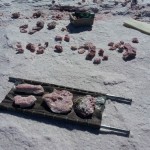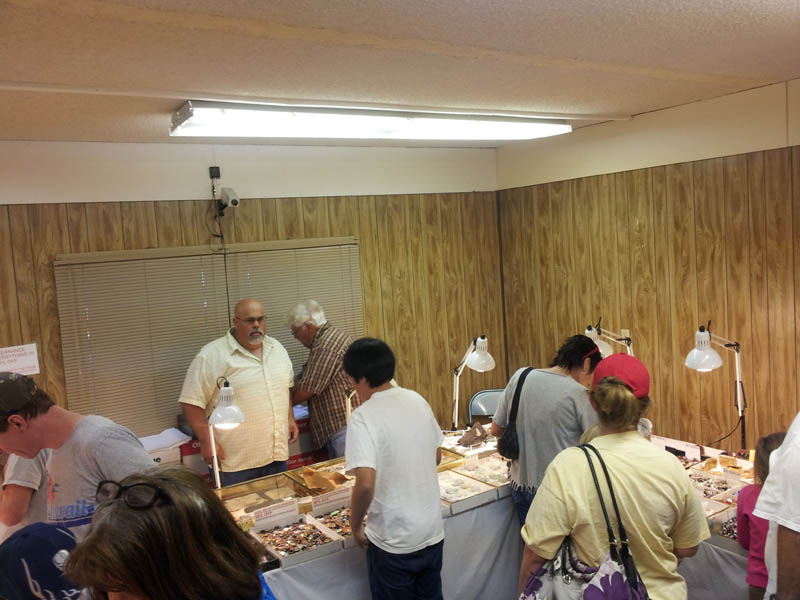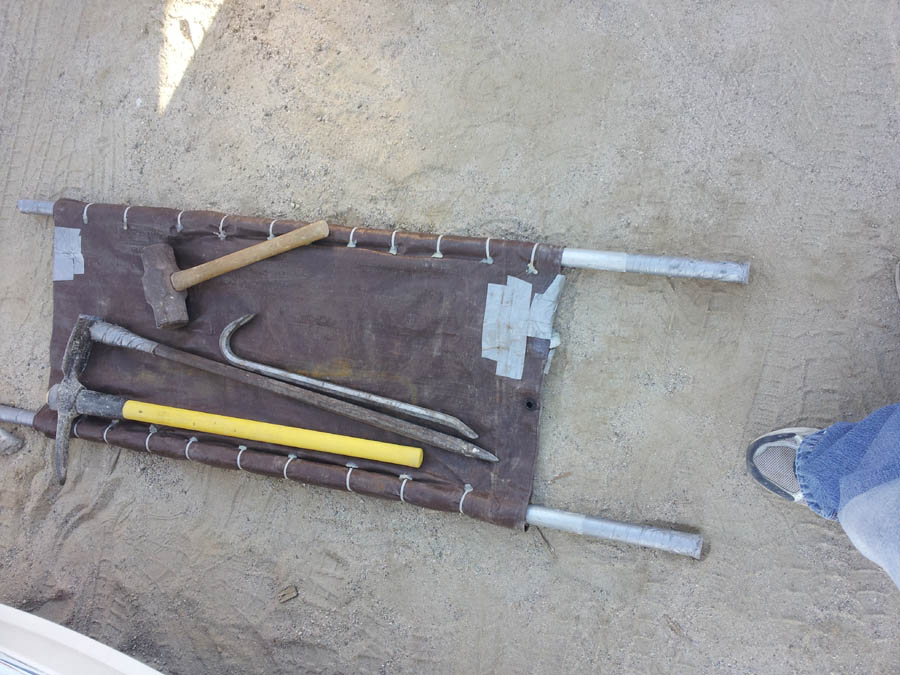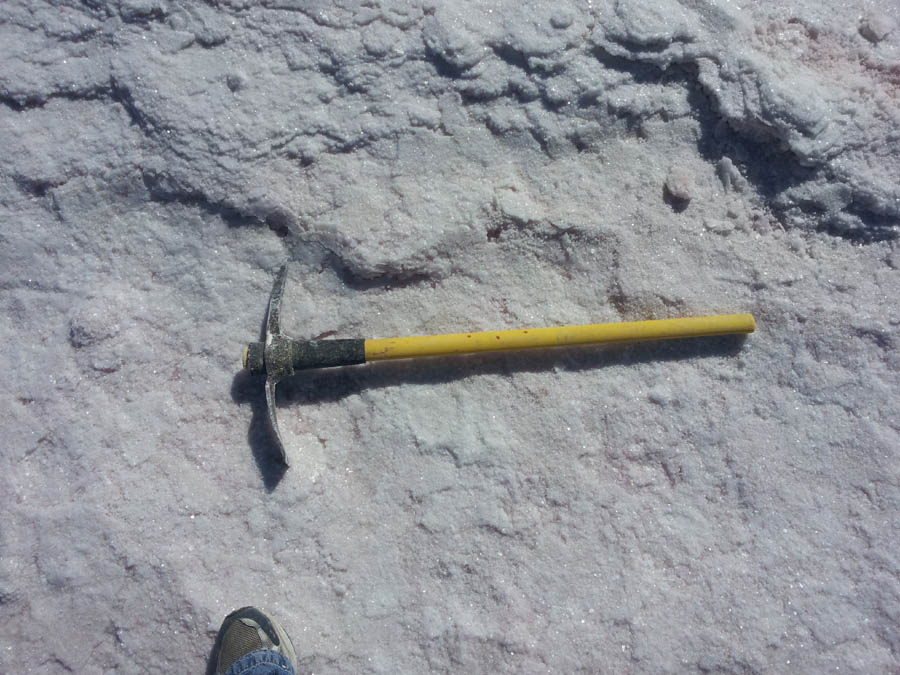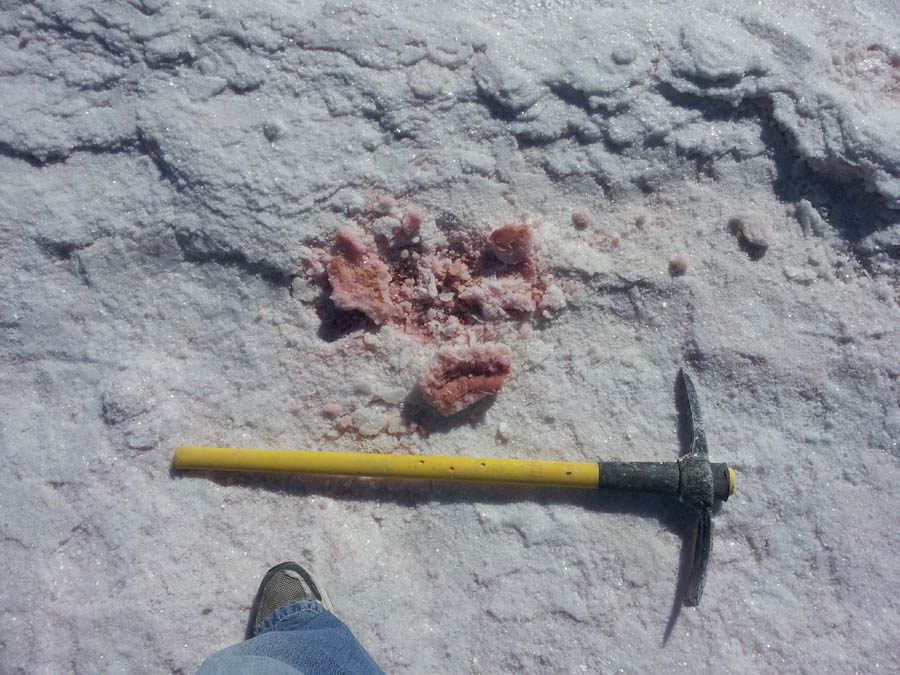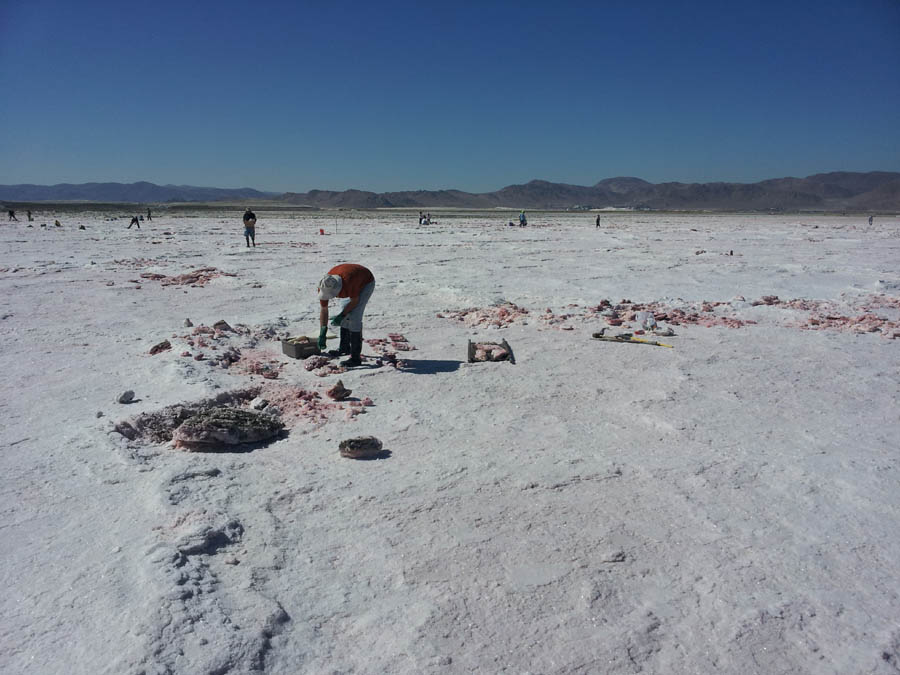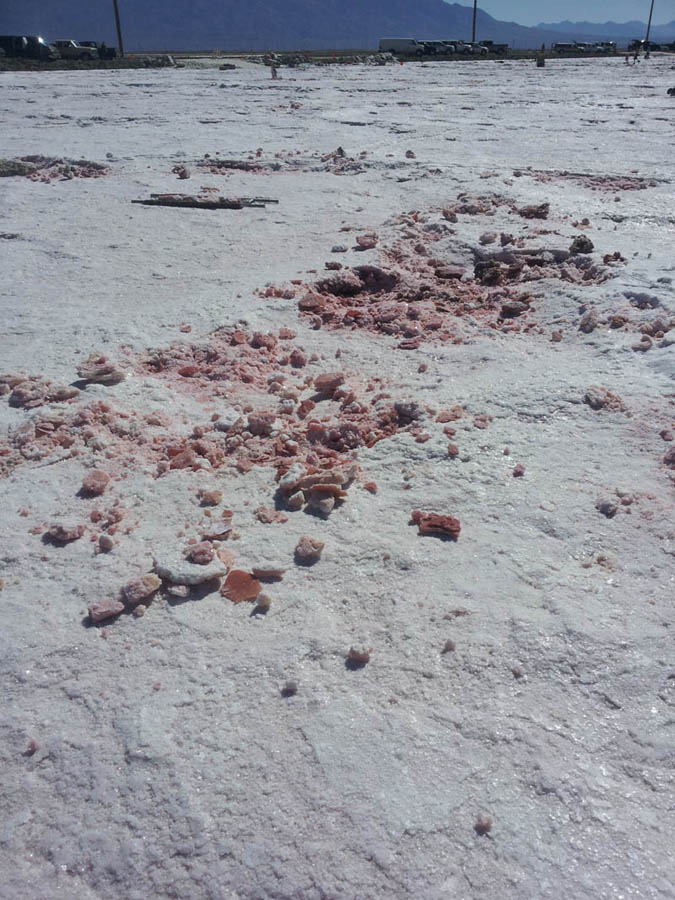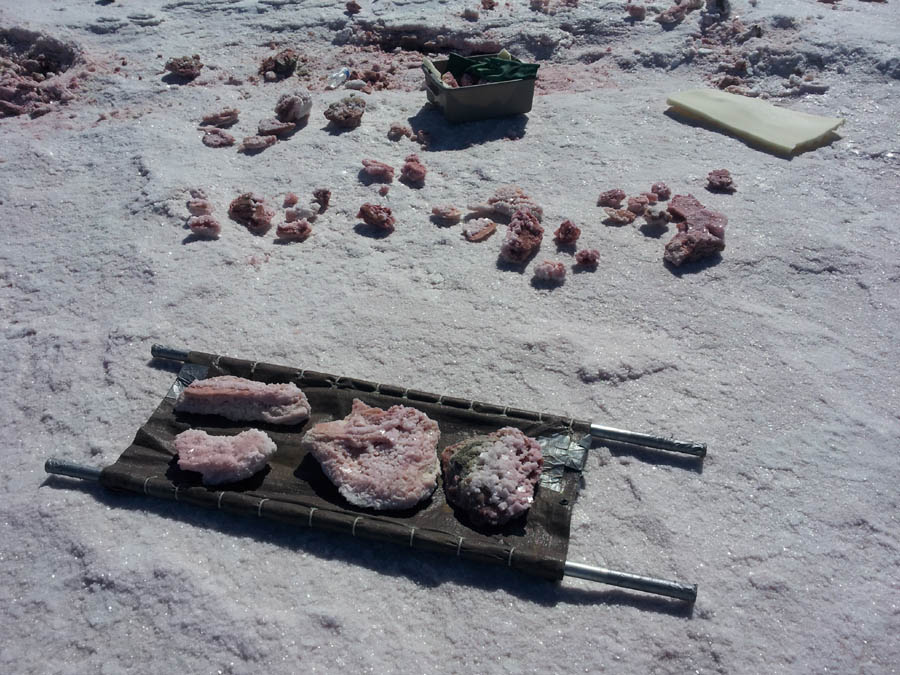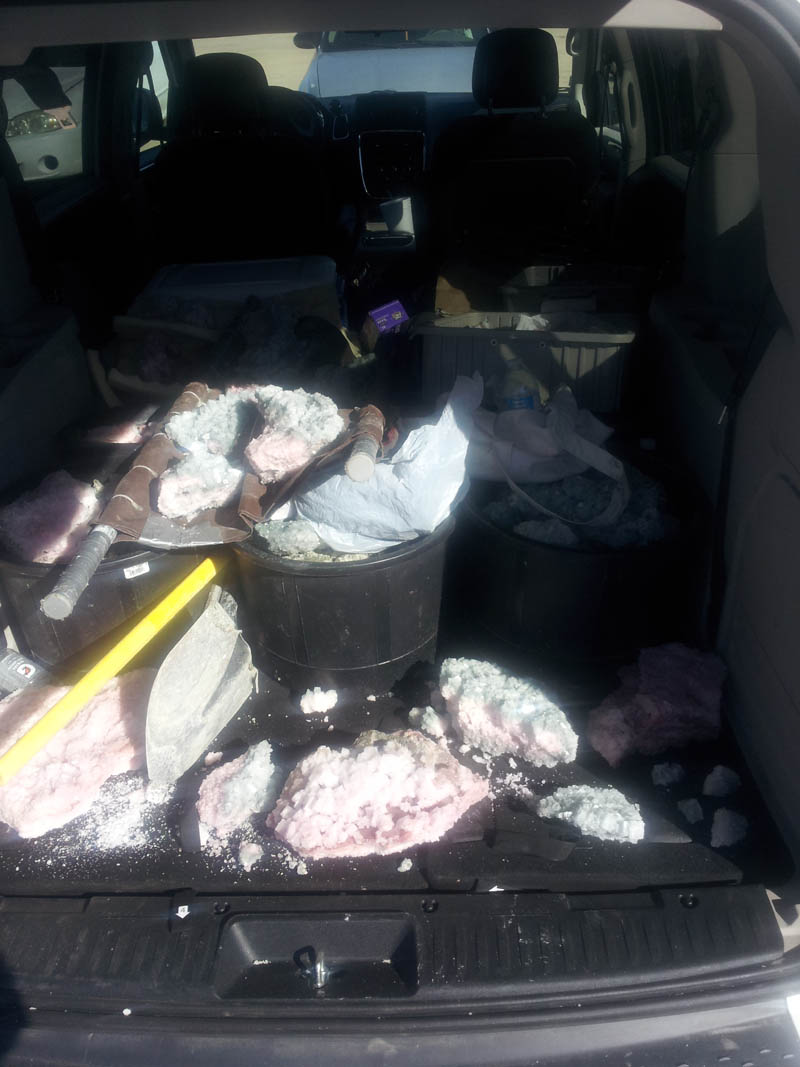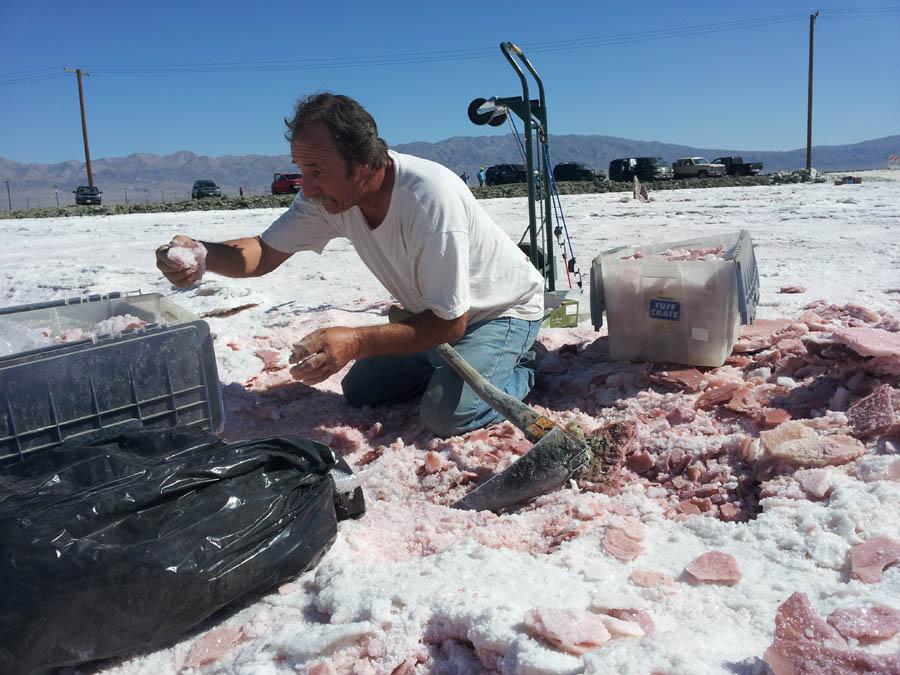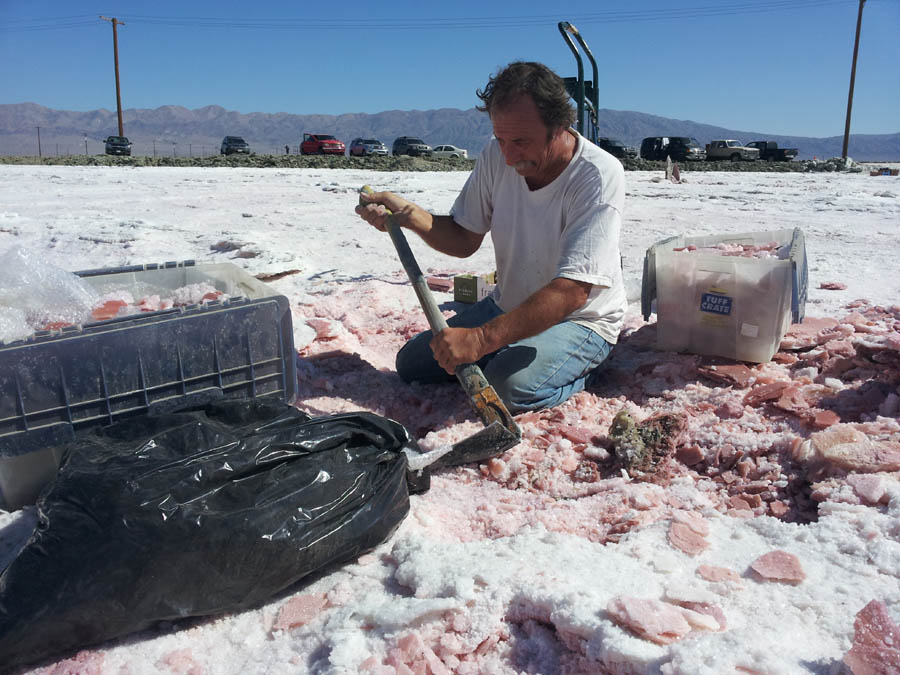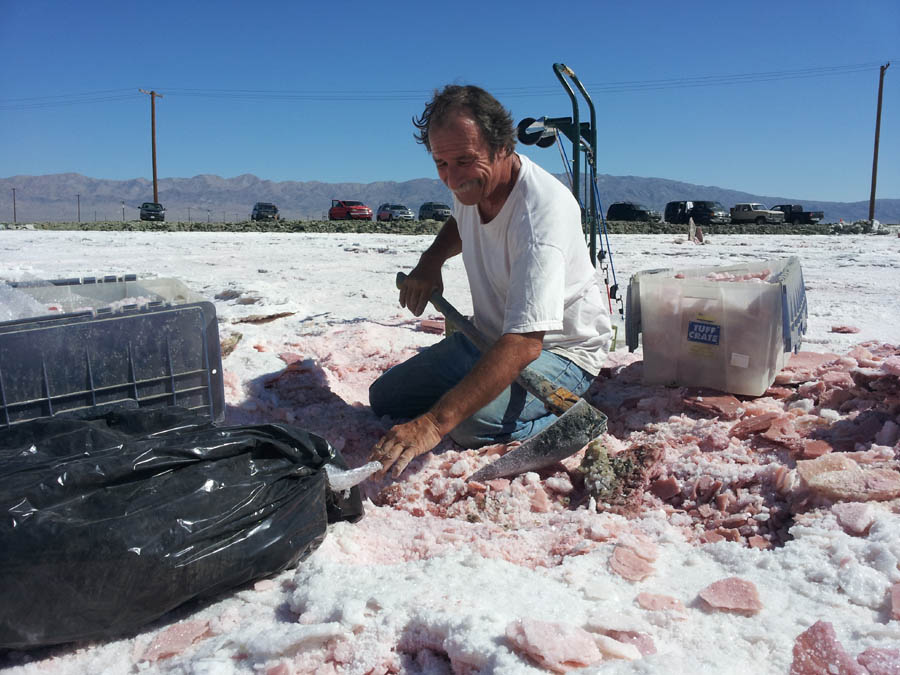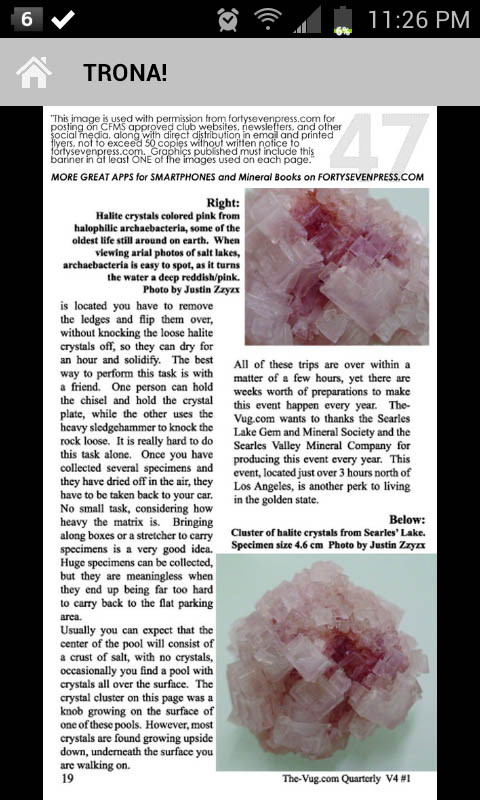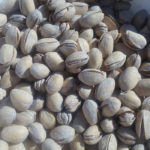
Minerals have long been used in farming. In the past, different abundances of minerals naturally occuring in nature would influence the local crops. Today, many of those conditions can be supplimented with the addition or subtraction of minerals and elements in the soil.
During the author’s years of growing and harvesting pistachios, the link between raw minerals and the final bagged nuts could be visualized.
Pistachio trees are either male or female. You can graft the two together and have one hermaphroditic tree, for the most part, they are separate and do different things.
The female tree has big broad leaves and branches that have lots of curves and style. The male tree has very thin leaves and sharp pointed branches that have sharp, straight, shoots. The female tree is the one that bears nuts, the male tree is responsible for the pollination. They are wind pollinated, so the timing has to be perfect every year during pollination.
The first mineral we mine and use is raw gypsum/selenite. Just a few miles away from our orchard, we have extensive deposits of raw gypsum, which we then water tumble in a giant 50 pound vibrating tumbler. The “waste” water is a large part of what we need for the grove. Fertilizer for the tree including pistachio wood ash, steer manure, a rich compost and tea, plus, crushed gypsum, all watered down with our waste water from the gypsum tumbling.
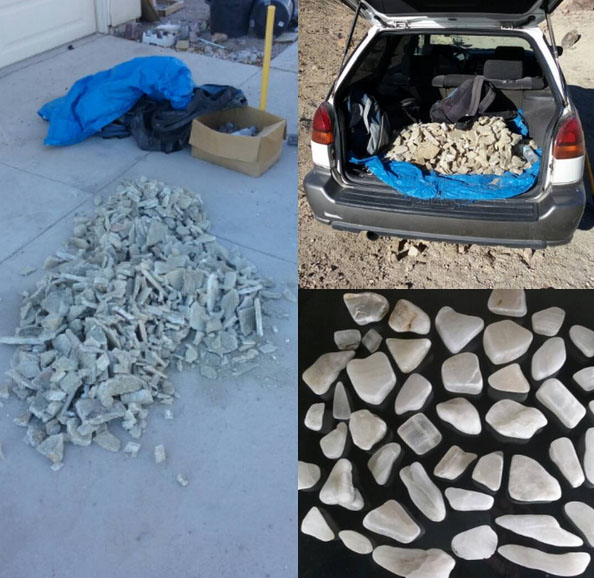
Mining Gypsum to use as a soil irrigation aid
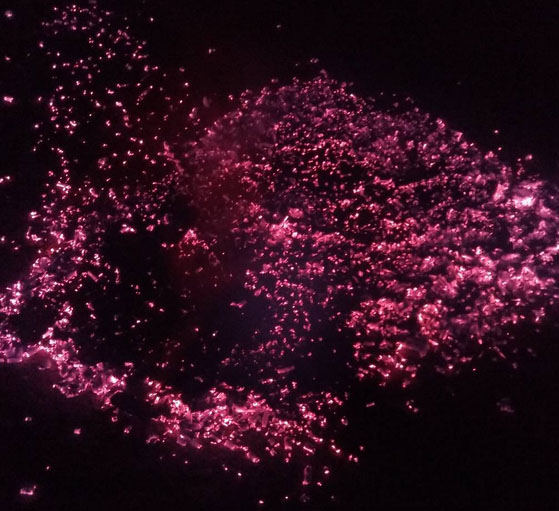
Pistachio wood trimmings are used for roasting and fertilizer, resulting in a beautiful cycle of nature and renewal.
Gypsum has a wonderful effect on soil, creating a path way for water to seep deeper into the ground. This is especially useful for this climate as the soil around the trees needs to soak in the water rapidly to the trees, rather than evaporating away from the top of the soil.
The larger pieces of gypsum were sold as tumbled stones by us at mineral shows.
There are two important times in the pistachios tree’s lives every year. In the beginning of spring, which is around March, the branches start to bud.
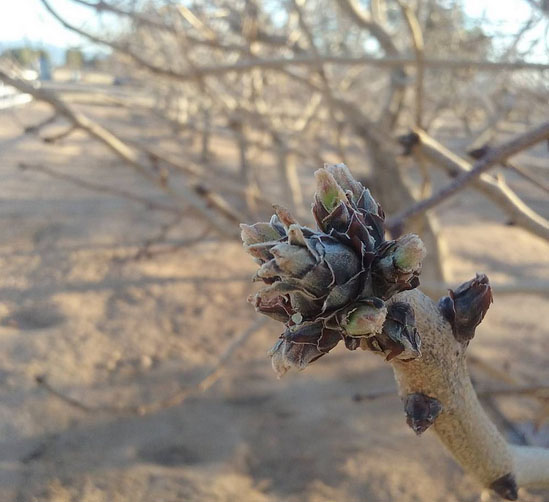
Female Pistachio Tree Starting to Bud
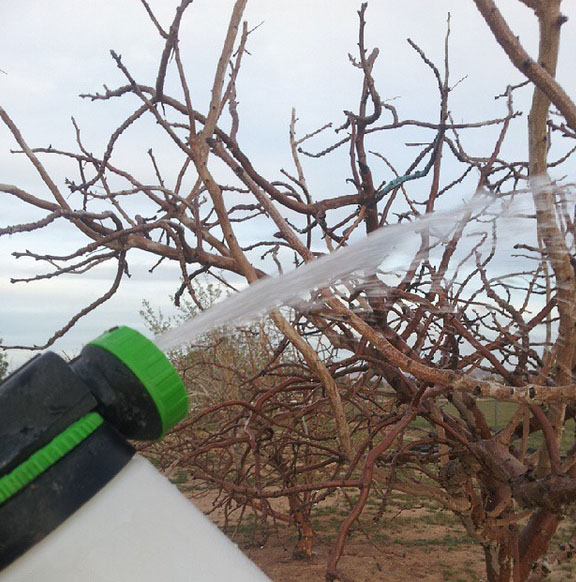
Boron, from crushed Borax crystals, and Zinc, are applied to the buds on the female pistachio tree just as they start to bud.
During this time, pollination is right around the corner, but first, they need a treatment of minerals to help them through the year. A mixture of Borax and Zinc are prepared and sprayed onto the tree’s branches, in order to do two things. The Borax, which we would mine in Searles’ Lake every October, makes the hard shell form thinner, which allows the pistachio seed to break open the shell while on the tree. You want this to happen, as the shell does not open any further after harvest without additional mechanical processing.
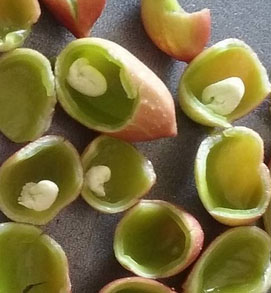
This is a developing pistachio, before it grows the thick brown shell you are familiar with. The Boron helps to keep the nut wall from being too thick, which results in more split nuts during harvest.
The Zinc allows the stems and seeds to hold fast onto the tree, which is very important because the winds in this part of the world can be devastating to an non zinc treated tree, dropping all the blooms and seeds onto the ground, resulting in a loss of pistachios.
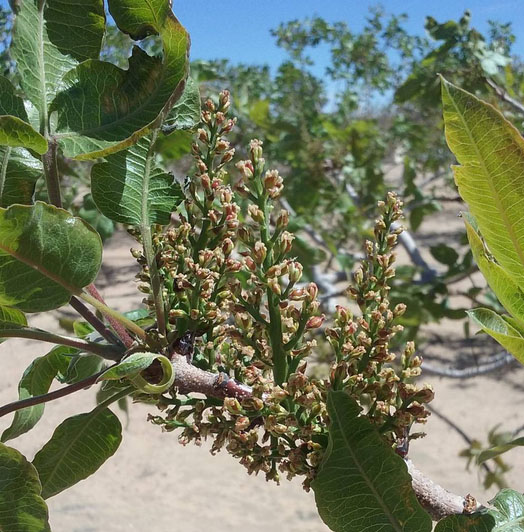
These tiny pollinated buds are now hanging on tight, so they can develop into full fledged pistachio seeds.
At the end of October and beginning of November, the trees are harvested. Most orchards are harvested by a nut collecting tractor, some smaller orchards, like ours, are best harvested by hand. With a dozen people armed with trimming knives and buckets, a couple hundred trees can be done in a few days. We separate the nuts from the stems by rolling them around on a large tarp, where the stems start to float to the top of the pile, then, scoop up the pistachios, put them in an industrial peeler which removes the fleshy coating, then float the nuts in a vat of water. The empty nuts float to the top and the ones with nuts sink to the bottom. They are then air dried and roasted with pistachio wood to fuel our ash needs for the following year.
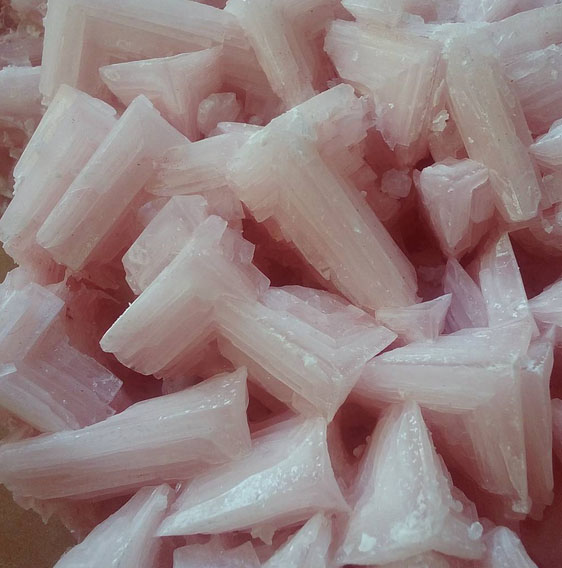
Natural Salt Crystals from Trona California
The end result?
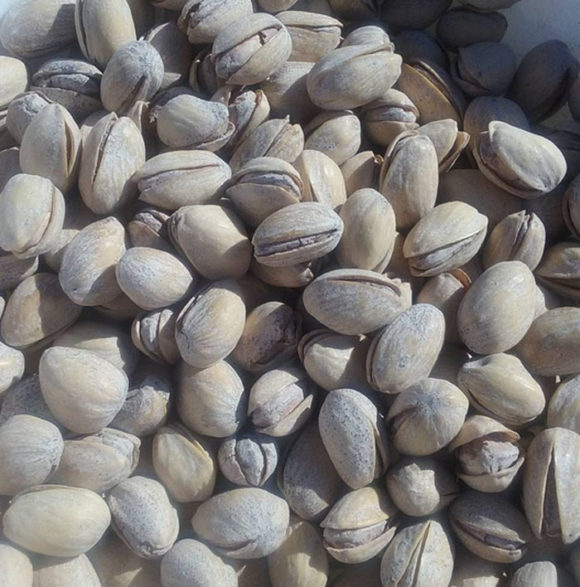
Lightly salted, lightly roasted, pistachio seeds in shell
Now you know what minerals are used in production of the delicious salty snacks you enjoy, hopefully, on the way to a rockhounding adventure!
